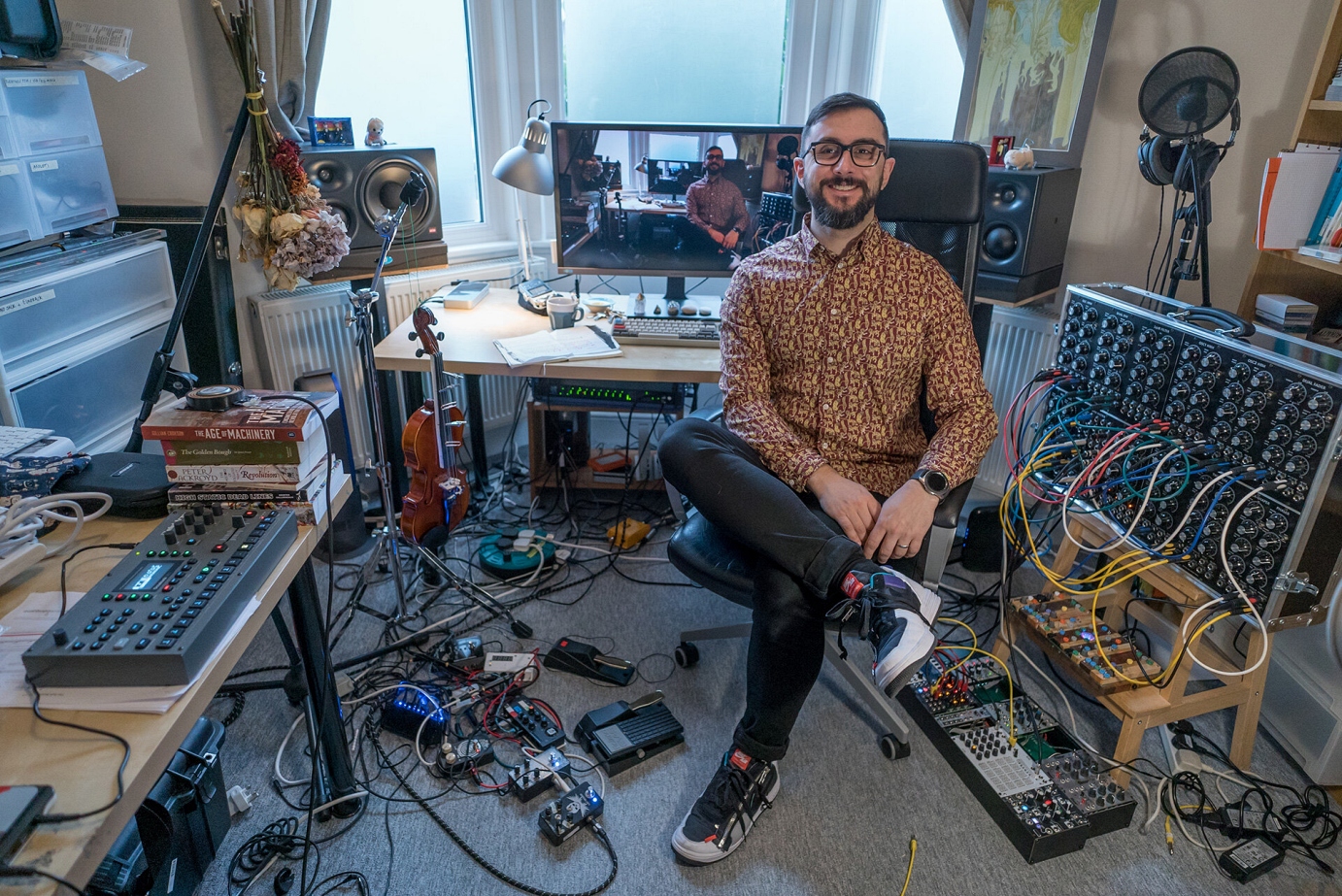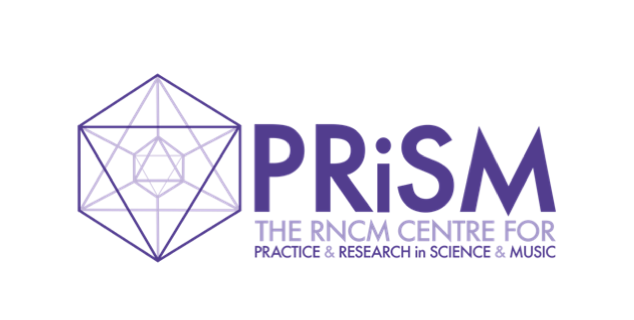THIS IS FINE: Spectres, Spectralism and Somnambulance
5 July 2023

Introduction
This is the first of four blog posts in which Dr Sam Salem (RNCM PRiSM Senior Lecturer in Composition) discusses his recent works for performers, electronics and fixed audio visual media: THIS IS FINE (2021), Shadows pass the morning ‘gins to break (2022), Bury Me Deep (2022), and The Way Up & The Way Down (2023).
In this blog, Salem traces along his long-time interest in Neural Synthesis and reflects on his first work using PRiSM SampleRNN. Through the lens of collaborative dialogues with cellist/vocalist Alice Purton, Salem delineates what’s behind his ‘unusual choice of source material’, challenges around remote working, as well as finding ways out of restrictions and interference.
THIS IS FINE: Spectres, Spectralism and Somnambulance
By Sam Salem
THIS IS FINE was written between September 2020 and February 2021 in that expansive period of (at best) collective anxiety, which, from our seemingly distant vantage, has taken on the mythical hue of an elusive, half-remembered dream.
I am incredibly grateful to have had the opportunity to write this piece, which was commissioned by the Ernst von Siemens Music Foundation as part of Distractfold Ensemble’s album The New Unusual, which itself grew out of our Conversations from Quarantine Podcast – a project instigated, in part, to keep the ensemble connected to our friends and collaborators, each other, and ourselves.
Written for, and with, cellist Alice Purton (of Distractfold Ensemble, Plus Minus, Trio Atem), THIS IS FINE is meditative, slowly violent, claustrophobic. It is ambiguous and strained, dark and knotty – but not, I hope, relentless. To my ear, it contains the glimmer of something beautiful, made more so because of its frailty. It is something like the glimmer of recognition of glimpsing a face in the fire.
THIS IS FINE builds upon my interest in Neural Synthesis, my early work with Wavenet and PRiSM SampleRNN (as discussed in my previous PRiSM Blog The Psychogeography of Latent Space).
THIS IS FINE is the first completed work of mine that was created using PRiSM SampleRNN – a tool developed by Dr Christopher Melen (former RNCM PRiSM Research Software Engineer), created to support a separate project, my work for American trombonist Weston Olencki, Bury Me Deep.

THIS IS FINE, 17.05.22, World Premiere, Unerhörte Musik, Berlin.
Follow That Camel
THIS IS FINE transforms material from Follow That Camel (1967) and Carry On Up The Khyber (1968), two broad British comedy films of the 60s, both part of the Carry On series of films. The pitch class for this piece is derived from a spectral analysis of the former, the video from a motion analysis of a scene from the latter.
Carry On Up The Khyber ends with a formal dinner within a colonial fortress, under siege from a rebellious horde. The gag is that the officers and their guests do their best to ignore the increasing devastation around them, determined to enjoy their meal at all costs – even as the chandelier crashes onto the dinner table and the string quartet find themselves dislodged by cannon fire. This comic obliviousness called to mind both the meme by K.C. Green after which this piece takes its name, and the ennui and determined denial at the heart of contemporary Britain.

Left: Still from the formal dinner scene in Carry On Up The Khyber (1968) | Right: Excerpt of Gunshow #648 © K.C. Green
There are myriad obvious issues of representation within these films (and others of their ilk and time), but they are not referenced within THIS IS FINE solely for the purpose of critique.
Rather, I have appropriated and transformed this material, in part in order to re-appropriate their orientalist depictions of broadly “arab-ish”, colonial others, in part because these (highly problematic) depictions of people of colour were some of the few that I had access to – questions of Britishness, identity, duty, seem as thorny, as complex and unresolved, to me now as they did 30 years ago, and this is reflected in my somewhat unusual choice of source material.
Workflow & Processes
THIS IS FINE began with a handful of preliminary studies, in this instance focused upon ideas of unison and beating, and transitions from pitch to noise (and vice versa).
The piece was written entirely remotely, i.e. without the ability to workshop materials with the performer, due to restrictions in place at that time.
Initial studies gave way to more extensive sketches, resulting in the final work.

THIS IS FINE: Excerpt of the studies

THIS IS FINE: Excerpt from the final score
I frequently sent material to Alice, and at each stage in the compositional process Alice returned a range of recorded interpretations of my notated materials.
These recordings, alongside the final album recordings (made in an improvised booth in her house) all formed the dataset for the PRiSM SampleRNN model created for the fixed media part of this piece.
This is to say that the dataset used to train the generative model is made of recordings of Alice learning the piece and auditioning materials, rather than using only the finalised cello part.
Below are two examples of material generated by the PRiSM SampleRNN model.
To the left is one of the direct outputs from Epoch 104 (reflective of what the neural network has learnt after going through the whole dataset 104 times); to the right is an excerpt of the finalised fixed media part of the piece, which retains the glitchy, noisy characteristics of the generated output, making a virtue of its discontinuities and frequent and unpredictable bursts of noise:
The video part was created using Houdini, a tool for procedural animation. I made a motion analysis of my selected Carry On scene and used the motion to drive the velocities of a particle simulation, with the rate of change increasing as the piece progresses.

THIS IS FINE: Still from the finalised video part.
Excerpt of a Conversation between Sam Salem & Alice Purton, April 2023
Sam Salem [SS]: It was quite a longitudinal process for a relatively short work. I remember sending studies, which were the starting point for the musical material of the piece. I knew that I wanted your voice with the cello, and to have this unison arrangement where you either start together and move apart, or vice versa, to create this range of interference. So interference was one theme. The other, I think, was noise, the idea of disintegration, or going in and out of noise.
What is your take on the piece now that it has been a couple of years since it was released? It still feels like a very new piece to me.
Alice Purton [AP]: Yes, because I haven’t had the chance to perform it, so it hasn’t got old.
SS: What does the piece mean to you?
AP: It’s a big question. I think it means the most… I don’t that I’ve ever had a piece that I identified with so much. I mean, it was a really weird experience, because I sent all these fragmentary recordings of the score – that was very hard.
SS: Sorry about that!
AP: I was recording in tiny sections because the material was so hard, I couldn’t find the pitches and do the jumps. So it all felt very fragmented. Then when you sent the finished track, I opened it up straight away and put my headphones on to listen to it – and I had such a strong reaction. I just could not stop crying when I listened because it feels like I’m in there, in the piece. I very strongly get the feeling that I’m sinking when I’m listening to it, because there are all these gradually descending tones, the bass coming in, and just everything has the feeling of melting and the little flickery sounds feel like burning. And then there’s the AI voice, which I find very moving because it’s so pathetic and non-human, but at the same time it’s very human, it sounds like it’s whimpering.
I also feel like part of our relationship is in the piece, because we’ve shared a lot over the years, in particular about experiences with depression. I feel like the piece describes a real feeling very clearly, which is something that I look for in any piece that I’m going to invest time in. Is this going to describe an emotion well, and even better is this going to describe an emotion that I understand and feel myself? And this piece feels like it is my own emotional world and it’s really weird and incredible and I love it.
SS: The piece is called THIS IS FINE after the meme of the same name. So, in a way you are the dog in the cafe, drinking your coffee.
AP: I feel like the dog.





